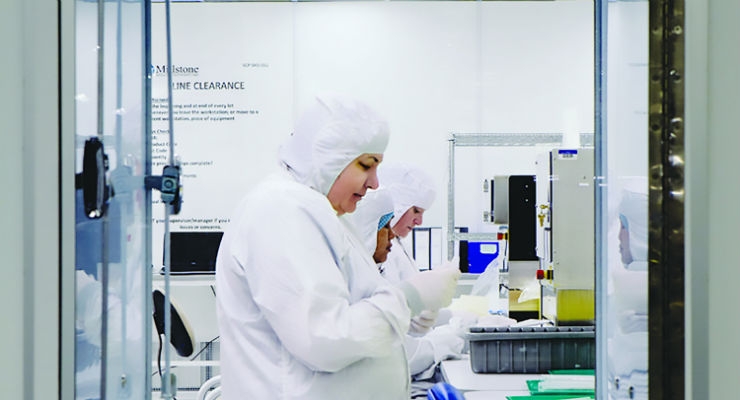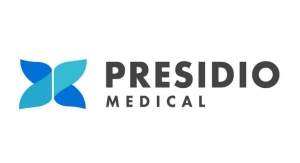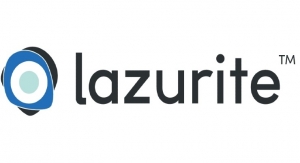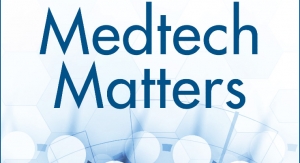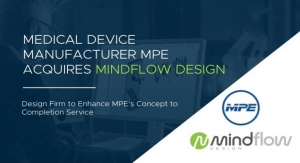Mark Crawford, Contributing Writer06.04.18
Packaging and sterilization are critical stages of medical device manufacturing—lives are on the line if sterilization is compromised through packaging or sterilization failures. Both sterilization and packaging markets remain mature, relying on standard, accepted materials and methods. The most prevalent materials are legacy materials such as Tyvek and nylon. Large-scale sterilization depends on the well-established ethylene oxide (EO) and gamma radiation processes. FDA and ISO standards continue to become more stringent, especially regarding quality. OEMs focus on how to abide by these standards, which can seem open to interpretation. Everyone is pressured to reduce costs.
Despite these challenges, the market remains robust. Future Market Insights, a research firm, forecasts the global medical device packaging market will grow at a steady compound annual growth rate of 5.3 percent during 2017-2027. Some of this growth is driven by the increase in sensitive and/or complex materials and devices, such as biologics and drug/device combinations, or those with electronic device components, which require unique packaging and environmental controls. These sensitive products also require less harsh, low-temperature sterilization methods with no toxic residuals—an expanding “niche” segment of the sterilization business.
Mergers and acquisitions continue to drive growth in the medical device packaging and sterilization market.
“Rapid market consolidation in the medical device industry is creating higher demand for outsourced packaging services as companies struggle with resource allocation associated with mergers and acquisitions,” said Jeff Barrett, president and CEO of J-Pac Medical, a Somersworth, N.H.-based provider of design, validation, packaging, and turnkey assembly and sterilization services to medical device manufacturers.
What OEMs Want
Timely and robust validations are critical for OEMs. They want to be sure their sterilization and packaging methods are both reliable and stable, especially for traceability purposes. Medical device manufacturers (MDMs) are facing tougher regulatory pressures, causing them to consider sterilization and package design earlier in the development process. They are constantly looking for innovations and services that compress product development cycles. MDMs are especially hungry for turnkey, end-process capabilities such as cleaning, packaging, and terminal sterilization, with documented validation for each process. Concepts of usability and “end-to-end sterility” are creating more dialogue in the supply chain, with packagers and sterilizers becoming valued MDM partners throughout the entire product development process.
“Many customers have limited sterile packaging expertise in-house as a result of reorganizations from consolidation or moving toward outsourcing as a product development strategy,” said Barrett. “Increasingly, we are being asked to provide complete turnkey service from design through validation and ongoing supply chain management.”
OEMs are interested in pre-validated packaging and offerings such as unique tray concepts that reduce packaging material, yet still ensure protection and sterility. This includes options to create product families or rigid tray inserts to minimize packaging validation costs. Utilization of a single-package configuration across multiple product designs is also on the rise, which “provides a type of ‘pre-validated packaging’ that increases time to market, while reducing up-front costs,” said Benjamin White, engineering manager, business development, for Millstone Medical, a Fall River, Mass.-based provider of cleanroom packaging, medical device-specific warehousing, distribution, loaner kit management, advanced inspection, and after-market services. “Single-package designs that fit a vast majority of devices also help reduce the environmental footprint of packaging.”
Some OEMs believe they can obtain a “pre-validated” packaging system. A package manufacturer may have data showing the empty package has been exposed to accelerated aging and passed integrity testing, but the data is not considered valid to use for expiration dating of the product. “Packaging validation must still include distribution simulation and aging of the package with the parts inside, to demonstrate that the part itself does not adversely impact the packaging over time,” said Jody Birks, director of regulatory/quality assurance for Eagle Medical, a Paso Robles, Calif.-based provider of cleanroom manufacturing, cleaning, packaging, and sterilization services.
Companies also seek improved user-centric package designs and configurations that facilitate aseptic transfer in a rapid, seamless manner. There is greater focus on how packaging facilitates good aseptic technique in the operating room (backed up by usability studies).
“Operating room nurses must maintain sterile techniques when transferring a sterile medical device into the sterile field,” said Barrett. “This requires easy-to-open packages that expose the device so that the scrubbed assistant can easily remove the device without touching the non-sterile parts of the package.”
For example, a thermoformed tray with a Tyvek lid should have a holding feature so the package can be securely held with one hand while peeling the lid open with the other. Components in the tray should be secure to keep parts from falling out as the open package is presented to the sterile field. Labels should be designed to enable easy confirmation of expiration dates prior to opening.
To better ensure the arrival of undamaged and sterile products, more OEMs are interested in evacuating air from pouches and bags. “Reasons vary from reducing the footprint of the product to reducing costs in sterility, costs in packaging, and securing the product to avoid movement and/or a sterility breach,” said Kathleen Feyti, technical sales manager for Packworld USA, a Nazareth, Pa.-based manufacturer of heat sealers for sterile barrier products. “In contrast, other customers want to maintain a modified atmosphere for the product, typically low oxygen, for longer shelf life.”
Ultimately, MDMs require high-quality packaging products, at an affordable cost, that are durable enough to withstand the entire value stream. “For sterilization processes for single-use devices, it’s all about cycle time,” said Janet Prust, director of standards and scientific affairs, Infection Prevention Division, for 3M Company, a St. Paul, Minn.-based provider of cleaning and sterility assurance products and low-temperature sterilization systems. “It’s important to optimize cycle time and throughput, so using quality control tools that allow for quick release to increase productivity can have a direct positive impact on unit cost.”
Low-Temperature Sterilization Options
High-volume sterilization of medical devices, which typically relies on the well-established EO and gamma radiation processes, hasn’t changed much in decades. These methods are used to sterilize the majority of medical devices today and are widely tested and approved. However, newer materials and drug-device combination products (many of which are temperature- or pressure-sensitive) are entering the market and require different sterilization and packaging technologies.
Sterilization takes its toll on materials. As a result, material compatibility is probably the most important factor in determining sterilization method. Each of the “big three” sterilization methods have their drawbacks. Gamma irradiation may cause cross-linking/brittleness and odors with many polymers. EO can be absorbed by many materials, creating problems with residual levels (it may also be toxic). High heat and/or humidity resulting from steam/autoclave can damage devices and packaging materials.
Newer, more sensitive devices, therefore, require less harsh, lower-temperature sterilization methods. Suitable low-temperature gas sterilization methods include carbon dioxide, vaporized peracetic acid, nitrogen dioxide, gas plasma hydrogen peroxide, and vaporized hydrogen peroxide. These lower-temperature processes are well-suited for smaller-volume, niche-type medical devices.
For example, “hydrogen peroxide gas plasma [HPGP] is a wonderful alternative to EO, as it provides faster low-temperature sterilization without toxic levels of residuals,” said Birks. “The technology is considered an established sterilization method by the FDA and extensively used in healthcare facilities around the world. Numerous 510(k) and pre-market approval devices have been approved using the HPGP sterilization process in the industrial market. Certain materials, however, are not compatible, including liquids, powders, cellulosic material, and some long narrow lumens. The hydrogen peroxide molecule is larger than an EO molecule and therefore does not penetrate materials in the same way as EO. Hence, HPGP is most effective as a surface sterilant.”
Low-temperature EO sterilization can also be effective with complex devices and combination devices. “There is opportunity to design custom cycles using existing low-temperature EO methods optimized for the special device,” said Prust. “In the past, devices were often designed for existing cycles, but that is changing now. There can be a measurable benefit to design the cycle to the device instead, and we now have the technology to do this.”
3M Company has developed a state-of-the art, low-temperature EO system called the 3M Steri-Vac GSX series sterilizer/aerator. It is equipped with a cycle programmer that allows the device manufacturer or contract sterilizer to custom-design a low-temperature EO cycle with 28 different set-point adjustments. “The system can easily be implemented in-house and has the ability to create the best cycle for the device,” said Prust.
Other Technology Trends
Advances in packaging and sterilization are driven by increased demands by OEMs for better-performing materials and methods—not just to protect their products, but to also shorten processes, increase efficiency and throughput, improve validation and traceability, reduce errors, meet or exceed regulatory requirements, and speed time to market.
For example, process automation eliminates human error and unacceptable variations, both in product specifications and manufacturing and assembly systems. “We now use automated lasers to cut package samples for strength testing,” said James Dwyer, vice president of technical operations at Millstone Medical. “We are also able to clean more complex geometries in medical devices due to our process advances in automated clean and dry. We are also working on adaptive algorithms to better utilize outputs from counting scales.”
Faster readout times for biological indicators is a key advancement in the sterilization process, saving time and reducing operational costs. While many device manufacturers still rely on four-, five-, or even seven-day readouts with traditional spore strips and laboratory incubation, biological indicator technologies that reduce incubation time have been available for many years with steam, EO, and hydrogen peroxide. Within the last two to four years, incubation-time final readouts for steam and hydrogen peroxide biological indicators are now available in as little as 24 minutes, which can provide a significant improvement in efficiency of the sterilized load release.
“By optimizing how the indicators react and are read, it’s possible to obtain a final result for release of goods in a few hours or even less,” said Prust. “This can have a significant positive impact on throughput.”
Pouches are usually fabricated from plastic, Tyvek, foil, paper, polyethylene, polypropylene, or laminates of these materials and sealed to form peel-open or tear-open packages. New packaging materials continue to come onto the market, including polyester/polyester combinations and linear low-density polyethylene. The integrity of the pouch, and its sealing, is one of the most important steps in medical device manufacturing. “Pouches and bags are not of any use until the end seal is created and the barrier complete,” said Feyti. “21CFR Part 11 compliance is a good start to achieve electronic records and electronic signatures.”
“The nylon pouch heat sealing process has the potential to be affected by multiple sources of variability,” said Dwyer. “A recent study by Millstone reveals that controlling temperature fluctuation with dual heated bar sealers is key to maintaining consistent peak peel strength results.”
An alternative to taking the “legacy” approach to materials is creating the best packaging solution for each product line—using the most effective material properties and sealing method. PackworldUSA heat sealers with variable resistance controls are capable of sealing all heat-sealable materials, from cleanroom to general purpose pouches. The heat sealing equipment does not need to be changed to handle different materials. “For example, heat sealers that can create a secure sterile barrier regardless of sealable materials are cost-effective,” said Feyti. “With limited cleanroom space, sealers that can go from constant heat to impulse heat sealing, from vacuum to non-vacuum, and can quickly change over to sealing lengths, save time and increase throughput.”
Amid all the focus on new materials, combined materials, cleaning and sterilization methods, and finding technological ways to keep products free from endotoxins, another approach is gaining traction—highly purified H2O. Utilizing highly purified water during the processing of devices continues to be an underappreciated consideration, whether in processes related to packaging material production or in the critical cleaning of medical devices prior to packaging. The key goal is the elimination of endotoxins from the device and the packaging materials—orthopedic devices are especially susceptible to aseptic loosening and research indicates the presence of endotoxins is a major contributor to this failure mode.
“Sterilization does not remove endotoxins,” said Dwyer. “Although removal of endotoxins through depyrogenation is possible, the most economical approach is prevention through the use of highly purified water. Some commonly used packaging components utilize water-based processes, so it is essential to ensure this water is free from endotoxins. As a result, increased awareness on water quality in regard to device cleaning is becoming more prevalent.”
Regulatory Considerations
Researchers are learning more about the degradation processes caused by sterilization, the durability of products and materials, and the useful service life for devices and equipment over time. This is also true for packaging. Careful analysis of the product and its material composition, as well as the material and design for the packaging configuration, is critical. New advancements often focus on better use of materials and form factors—for example, more OEMs are starting to use urethane-based tray inserts, as well as polyethylene terephthalate (PETG)/urethane blend films, which offer improved impact and abrasion resistance.
The FDA recognizes ISO 11607, which is a fairly complicated guideline that can be frustratingly open to interpretation. “I think the FDA is becoming more concerned about how the product impacts the end user’s ability to use the device effectively, and packaging has a big impact on that requirement,” said Barrett. “We see deeper dives by the FDA into usability studies and packaging validation.”
False assumptions by some OEMs about how to interpret ISO 11607 can result in extended validation times. For example, some companies still ask for the package performance testing to be combined with stability studies. “This is not required in the standard and can delay development,” said Barrett.
Upcoming changes to ISO 11607 will likely have impacts on medical device performance testing (vote on the final draft is in August 2018). “Some of the proposed changes may warrant some pre-planning to ensure medical device packaging is tested in accordance with the proposed revisions,” said Feyti.
Moving Forward
Sterilization and packaging utilize mature, well-understood processes and materials. As part of a legacy business in a risk-averse, highly regulated field, MDMs are reluctant to try anything new or different unless absolutely necessary. However, as demand grows for more advanced complex and sensitive devices, legacy methods won’t meet the accompanying sterilization and packaging demands and companies will have to turn to newer methods. This is where teaming up with an experienced sterilizer and packager can ease the uncertainty of trying new things.
In fact, to solve the emerging challenges that their MDMs face, sterilizers and packagers sometimes collaborate to share their combined knowledge to develop new products on their own, or for clients. “We work with our sterilization partners on every new program and product launch to implement optimum solutions for sterilization that offer a high degree of sterility assurance,” said Dwyer.
Eagle Medical has numerous packaging converters/manufacturers that provide high-quality packaging systems that are proven effective sterile barriers for a variety of sterilization methods. “Eagle’s supplier partnerships with packaging innovators, as well as our services of turnkey end processes, provide a wealth of knowledge,” said Birks. “This combined experience can be invaluable in avoiding packaging validation surprises/failures.”
And, as change-resistant as OEMs are, they (and their supply chains) will have to come to terms with Industry 4.0, which is digitizing the manufacturing world with technologies such as the Internet of Things, additive manufacturing/3D printing, automation, robotics, machine learning, big data analytics, virtual reality/augmented reality simulation, and wireless technologies. MDMs that embrace Industry 4.0 will see tremendous gains in production efficiencies, quality, regulatory compliance, throughput, and market share—all while reducing operational costs.
“The next industrial revolution—Industry 4.0—is now a discussion in the medical device industry,” said Feyti. “Healthcare companies are looking for data analytics in their packaging operations for compliance and traceability. This capability will give OEMs an advantage of being preferred suppliers to their end users.”
For example, smart packaging is on the horizon. “At its most basic concept, customers will be able to track a package throughout the entire supply chain and monitor shipping stress in real time to ensure a package meets its specification prior to being open,” said Barrett.
Smart packaging utilizes wireless technologies such as radio-frequency identification (RFID) to identify or track products or components. Millstone has developed and employed RFID and Bluetooth technologies to make smart dies that talk to the packaging equipment. A sealing die is unique to a packaging configuration that has been validated. When the product broadcasts its identity to the die, the die communicates that identity to the sealer, as well as whether or not the product is in correct alignment.
“Allowing the die to call up its validated parameters mistake-proofs the process,” said Dwyer. “The implementation of such technology enhances quality and lowers costs and risks—essential in a high-mix medical device packaging environment. RFIDs are becoming more popular within tray sealing fixtures to ensure the correct, validated sealing parameters are utilized by allowing communication to the corresponding validated sealer.”
Unique device identifiers (UDIs) are probably one of the biggest “smart” developments in sterilization and packaging, especially now that UDI placement is required on certain devices—not just on the labeling. “The UDI mark must maintain its integrity throughout sterilization and distribution,” said Birks.
UDI will improve inventory management for both MDMs and end users. Immediate and consistent medical device identification simplifies tracking in real time and helps identify any quality issues/damage/compromised sterility before they possibly impact patients. Device-level performance data can also be gathered through UDI, which is then analyzed to evaluate device performance, especially in hospital settings.
“New materials and technologies are continually being introduced into the medical device industry,” said Birks. “Teaming up with a contract provider of packaging and sterilization services, including validations, can be a valuable source of knowledge and expertise to avoid pitfalls and ensure rapid time to market. Contract service providers specialize in operations and services that have been validated and are performed day-in and day-out. A well-crafted quality agreement will ensure that regulatory responsibilities are defined and addressed, including provision of necessary documentation for regulatory submissions.”
Mark Crawford is a full-time freelance business and marketing/communications writer based in Madison, Wis. His clients range from startups to global manufacturing leaders. He also writes a variety of feature articles for regional and national publications and is the author of five books.
Despite these challenges, the market remains robust. Future Market Insights, a research firm, forecasts the global medical device packaging market will grow at a steady compound annual growth rate of 5.3 percent during 2017-2027. Some of this growth is driven by the increase in sensitive and/or complex materials and devices, such as biologics and drug/device combinations, or those with electronic device components, which require unique packaging and environmental controls. These sensitive products also require less harsh, low-temperature sterilization methods with no toxic residuals—an expanding “niche” segment of the sterilization business.
Mergers and acquisitions continue to drive growth in the medical device packaging and sterilization market.
“Rapid market consolidation in the medical device industry is creating higher demand for outsourced packaging services as companies struggle with resource allocation associated with mergers and acquisitions,” said Jeff Barrett, president and CEO of J-Pac Medical, a Somersworth, N.H.-based provider of design, validation, packaging, and turnkey assembly and sterilization services to medical device manufacturers.
What OEMs Want
Timely and robust validations are critical for OEMs. They want to be sure their sterilization and packaging methods are both reliable and stable, especially for traceability purposes. Medical device manufacturers (MDMs) are facing tougher regulatory pressures, causing them to consider sterilization and package design earlier in the development process. They are constantly looking for innovations and services that compress product development cycles. MDMs are especially hungry for turnkey, end-process capabilities such as cleaning, packaging, and terminal sterilization, with documented validation for each process. Concepts of usability and “end-to-end sterility” are creating more dialogue in the supply chain, with packagers and sterilizers becoming valued MDM partners throughout the entire product development process.
“Many customers have limited sterile packaging expertise in-house as a result of reorganizations from consolidation or moving toward outsourcing as a product development strategy,” said Barrett. “Increasingly, we are being asked to provide complete turnkey service from design through validation and ongoing supply chain management.”
OEMs are interested in pre-validated packaging and offerings such as unique tray concepts that reduce packaging material, yet still ensure protection and sterility. This includes options to create product families or rigid tray inserts to minimize packaging validation costs. Utilization of a single-package configuration across multiple product designs is also on the rise, which “provides a type of ‘pre-validated packaging’ that increases time to market, while reducing up-front costs,” said Benjamin White, engineering manager, business development, for Millstone Medical, a Fall River, Mass.-based provider of cleanroom packaging, medical device-specific warehousing, distribution, loaner kit management, advanced inspection, and after-market services. “Single-package designs that fit a vast majority of devices also help reduce the environmental footprint of packaging.”
Some OEMs believe they can obtain a “pre-validated” packaging system. A package manufacturer may have data showing the empty package has been exposed to accelerated aging and passed integrity testing, but the data is not considered valid to use for expiration dating of the product. “Packaging validation must still include distribution simulation and aging of the package with the parts inside, to demonstrate that the part itself does not adversely impact the packaging over time,” said Jody Birks, director of regulatory/quality assurance for Eagle Medical, a Paso Robles, Calif.-based provider of cleanroom manufacturing, cleaning, packaging, and sterilization services.
Companies also seek improved user-centric package designs and configurations that facilitate aseptic transfer in a rapid, seamless manner. There is greater focus on how packaging facilitates good aseptic technique in the operating room (backed up by usability studies).
“Operating room nurses must maintain sterile techniques when transferring a sterile medical device into the sterile field,” said Barrett. “This requires easy-to-open packages that expose the device so that the scrubbed assistant can easily remove the device without touching the non-sterile parts of the package.”
For example, a thermoformed tray with a Tyvek lid should have a holding feature so the package can be securely held with one hand while peeling the lid open with the other. Components in the tray should be secure to keep parts from falling out as the open package is presented to the sterile field. Labels should be designed to enable easy confirmation of expiration dates prior to opening.
To better ensure the arrival of undamaged and sterile products, more OEMs are interested in evacuating air from pouches and bags. “Reasons vary from reducing the footprint of the product to reducing costs in sterility, costs in packaging, and securing the product to avoid movement and/or a sterility breach,” said Kathleen Feyti, technical sales manager for Packworld USA, a Nazareth, Pa.-based manufacturer of heat sealers for sterile barrier products. “In contrast, other customers want to maintain a modified atmosphere for the product, typically low oxygen, for longer shelf life.”
Ultimately, MDMs require high-quality packaging products, at an affordable cost, that are durable enough to withstand the entire value stream. “For sterilization processes for single-use devices, it’s all about cycle time,” said Janet Prust, director of standards and scientific affairs, Infection Prevention Division, for 3M Company, a St. Paul, Minn.-based provider of cleaning and sterility assurance products and low-temperature sterilization systems. “It’s important to optimize cycle time and throughput, so using quality control tools that allow for quick release to increase productivity can have a direct positive impact on unit cost.”
Low-Temperature Sterilization Options
High-volume sterilization of medical devices, which typically relies on the well-established EO and gamma radiation processes, hasn’t changed much in decades. These methods are used to sterilize the majority of medical devices today and are widely tested and approved. However, newer materials and drug-device combination products (many of which are temperature- or pressure-sensitive) are entering the market and require different sterilization and packaging technologies.
Sterilization takes its toll on materials. As a result, material compatibility is probably the most important factor in determining sterilization method. Each of the “big three” sterilization methods have their drawbacks. Gamma irradiation may cause cross-linking/brittleness and odors with many polymers. EO can be absorbed by many materials, creating problems with residual levels (it may also be toxic). High heat and/or humidity resulting from steam/autoclave can damage devices and packaging materials.
Newer, more sensitive devices, therefore, require less harsh, lower-temperature sterilization methods. Suitable low-temperature gas sterilization methods include carbon dioxide, vaporized peracetic acid, nitrogen dioxide, gas plasma hydrogen peroxide, and vaporized hydrogen peroxide. These lower-temperature processes are well-suited for smaller-volume, niche-type medical devices.
For example, “hydrogen peroxide gas plasma [HPGP] is a wonderful alternative to EO, as it provides faster low-temperature sterilization without toxic levels of residuals,” said Birks. “The technology is considered an established sterilization method by the FDA and extensively used in healthcare facilities around the world. Numerous 510(k) and pre-market approval devices have been approved using the HPGP sterilization process in the industrial market. Certain materials, however, are not compatible, including liquids, powders, cellulosic material, and some long narrow lumens. The hydrogen peroxide molecule is larger than an EO molecule and therefore does not penetrate materials in the same way as EO. Hence, HPGP is most effective as a surface sterilant.”
Low-temperature EO sterilization can also be effective with complex devices and combination devices. “There is opportunity to design custom cycles using existing low-temperature EO methods optimized for the special device,” said Prust. “In the past, devices were often designed for existing cycles, but that is changing now. There can be a measurable benefit to design the cycle to the device instead, and we now have the technology to do this.”
3M Company has developed a state-of-the art, low-temperature EO system called the 3M Steri-Vac GSX series sterilizer/aerator. It is equipped with a cycle programmer that allows the device manufacturer or contract sterilizer to custom-design a low-temperature EO cycle with 28 different set-point adjustments. “The system can easily be implemented in-house and has the ability to create the best cycle for the device,” said Prust.
Other Technology Trends
Advances in packaging and sterilization are driven by increased demands by OEMs for better-performing materials and methods—not just to protect their products, but to also shorten processes, increase efficiency and throughput, improve validation and traceability, reduce errors, meet or exceed regulatory requirements, and speed time to market.
For example, process automation eliminates human error and unacceptable variations, both in product specifications and manufacturing and assembly systems. “We now use automated lasers to cut package samples for strength testing,” said James Dwyer, vice president of technical operations at Millstone Medical. “We are also able to clean more complex geometries in medical devices due to our process advances in automated clean and dry. We are also working on adaptive algorithms to better utilize outputs from counting scales.”
Faster readout times for biological indicators is a key advancement in the sterilization process, saving time and reducing operational costs. While many device manufacturers still rely on four-, five-, or even seven-day readouts with traditional spore strips and laboratory incubation, biological indicator technologies that reduce incubation time have been available for many years with steam, EO, and hydrogen peroxide. Within the last two to four years, incubation-time final readouts for steam and hydrogen peroxide biological indicators are now available in as little as 24 minutes, which can provide a significant improvement in efficiency of the sterilized load release.
“By optimizing how the indicators react and are read, it’s possible to obtain a final result for release of goods in a few hours or even less,” said Prust. “This can have a significant positive impact on throughput.”
Pouches are usually fabricated from plastic, Tyvek, foil, paper, polyethylene, polypropylene, or laminates of these materials and sealed to form peel-open or tear-open packages. New packaging materials continue to come onto the market, including polyester/polyester combinations and linear low-density polyethylene. The integrity of the pouch, and its sealing, is one of the most important steps in medical device manufacturing. “Pouches and bags are not of any use until the end seal is created and the barrier complete,” said Feyti. “21CFR Part 11 compliance is a good start to achieve electronic records and electronic signatures.”
“The nylon pouch heat sealing process has the potential to be affected by multiple sources of variability,” said Dwyer. “A recent study by Millstone reveals that controlling temperature fluctuation with dual heated bar sealers is key to maintaining consistent peak peel strength results.”
An alternative to taking the “legacy” approach to materials is creating the best packaging solution for each product line—using the most effective material properties and sealing method. PackworldUSA heat sealers with variable resistance controls are capable of sealing all heat-sealable materials, from cleanroom to general purpose pouches. The heat sealing equipment does not need to be changed to handle different materials. “For example, heat sealers that can create a secure sterile barrier regardless of sealable materials are cost-effective,” said Feyti. “With limited cleanroom space, sealers that can go from constant heat to impulse heat sealing, from vacuum to non-vacuum, and can quickly change over to sealing lengths, save time and increase throughput.”
Amid all the focus on new materials, combined materials, cleaning and sterilization methods, and finding technological ways to keep products free from endotoxins, another approach is gaining traction—highly purified H2O. Utilizing highly purified water during the processing of devices continues to be an underappreciated consideration, whether in processes related to packaging material production or in the critical cleaning of medical devices prior to packaging. The key goal is the elimination of endotoxins from the device and the packaging materials—orthopedic devices are especially susceptible to aseptic loosening and research indicates the presence of endotoxins is a major contributor to this failure mode.
“Sterilization does not remove endotoxins,” said Dwyer. “Although removal of endotoxins through depyrogenation is possible, the most economical approach is prevention through the use of highly purified water. Some commonly used packaging components utilize water-based processes, so it is essential to ensure this water is free from endotoxins. As a result, increased awareness on water quality in regard to device cleaning is becoming more prevalent.”
Regulatory Considerations
Researchers are learning more about the degradation processes caused by sterilization, the durability of products and materials, and the useful service life for devices and equipment over time. This is also true for packaging. Careful analysis of the product and its material composition, as well as the material and design for the packaging configuration, is critical. New advancements often focus on better use of materials and form factors—for example, more OEMs are starting to use urethane-based tray inserts, as well as polyethylene terephthalate (PETG)/urethane blend films, which offer improved impact and abrasion resistance.
The FDA recognizes ISO 11607, which is a fairly complicated guideline that can be frustratingly open to interpretation. “I think the FDA is becoming more concerned about how the product impacts the end user’s ability to use the device effectively, and packaging has a big impact on that requirement,” said Barrett. “We see deeper dives by the FDA into usability studies and packaging validation.”
False assumptions by some OEMs about how to interpret ISO 11607 can result in extended validation times. For example, some companies still ask for the package performance testing to be combined with stability studies. “This is not required in the standard and can delay development,” said Barrett.
Upcoming changes to ISO 11607 will likely have impacts on medical device performance testing (vote on the final draft is in August 2018). “Some of the proposed changes may warrant some pre-planning to ensure medical device packaging is tested in accordance with the proposed revisions,” said Feyti.
Moving Forward
Sterilization and packaging utilize mature, well-understood processes and materials. As part of a legacy business in a risk-averse, highly regulated field, MDMs are reluctant to try anything new or different unless absolutely necessary. However, as demand grows for more advanced complex and sensitive devices, legacy methods won’t meet the accompanying sterilization and packaging demands and companies will have to turn to newer methods. This is where teaming up with an experienced sterilizer and packager can ease the uncertainty of trying new things.
In fact, to solve the emerging challenges that their MDMs face, sterilizers and packagers sometimes collaborate to share their combined knowledge to develop new products on their own, or for clients. “We work with our sterilization partners on every new program and product launch to implement optimum solutions for sterilization that offer a high degree of sterility assurance,” said Dwyer.
Eagle Medical has numerous packaging converters/manufacturers that provide high-quality packaging systems that are proven effective sterile barriers for a variety of sterilization methods. “Eagle’s supplier partnerships with packaging innovators, as well as our services of turnkey end processes, provide a wealth of knowledge,” said Birks. “This combined experience can be invaluable in avoiding packaging validation surprises/failures.”
And, as change-resistant as OEMs are, they (and their supply chains) will have to come to terms with Industry 4.0, which is digitizing the manufacturing world with technologies such as the Internet of Things, additive manufacturing/3D printing, automation, robotics, machine learning, big data analytics, virtual reality/augmented reality simulation, and wireless technologies. MDMs that embrace Industry 4.0 will see tremendous gains in production efficiencies, quality, regulatory compliance, throughput, and market share—all while reducing operational costs.
“The next industrial revolution—Industry 4.0—is now a discussion in the medical device industry,” said Feyti. “Healthcare companies are looking for data analytics in their packaging operations for compliance and traceability. This capability will give OEMs an advantage of being preferred suppliers to their end users.”
For example, smart packaging is on the horizon. “At its most basic concept, customers will be able to track a package throughout the entire supply chain and monitor shipping stress in real time to ensure a package meets its specification prior to being open,” said Barrett.
Smart packaging utilizes wireless technologies such as radio-frequency identification (RFID) to identify or track products or components. Millstone has developed and employed RFID and Bluetooth technologies to make smart dies that talk to the packaging equipment. A sealing die is unique to a packaging configuration that has been validated. When the product broadcasts its identity to the die, the die communicates that identity to the sealer, as well as whether or not the product is in correct alignment.
“Allowing the die to call up its validated parameters mistake-proofs the process,” said Dwyer. “The implementation of such technology enhances quality and lowers costs and risks—essential in a high-mix medical device packaging environment. RFIDs are becoming more popular within tray sealing fixtures to ensure the correct, validated sealing parameters are utilized by allowing communication to the corresponding validated sealer.”
Unique device identifiers (UDIs) are probably one of the biggest “smart” developments in sterilization and packaging, especially now that UDI placement is required on certain devices—not just on the labeling. “The UDI mark must maintain its integrity throughout sterilization and distribution,” said Birks.
UDI will improve inventory management for both MDMs and end users. Immediate and consistent medical device identification simplifies tracking in real time and helps identify any quality issues/damage/compromised sterility before they possibly impact patients. Device-level performance data can also be gathered through UDI, which is then analyzed to evaluate device performance, especially in hospital settings.
“New materials and technologies are continually being introduced into the medical device industry,” said Birks. “Teaming up with a contract provider of packaging and sterilization services, including validations, can be a valuable source of knowledge and expertise to avoid pitfalls and ensure rapid time to market. Contract service providers specialize in operations and services that have been validated and are performed day-in and day-out. A well-crafted quality agreement will ensure that regulatory responsibilities are defined and addressed, including provision of necessary documentation for regulatory submissions.”
Mark Crawford is a full-time freelance business and marketing/communications writer based in Madison, Wis. His clients range from startups to global manufacturing leaders. He also writes a variety of feature articles for regional and national publications and is the author of five books.

